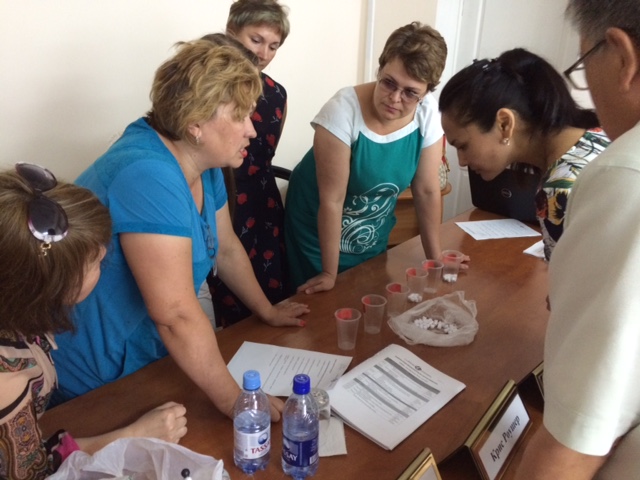The Twinning Arrangement for Upgrading Clinical Practice and Medical Services Standardization Based on Evidence-Based Medicine (EBM) and Health Technology Assessment (HTA) is a sub-component of the Kazakhstan Health Services Technology Transfer and Institutional Reform Project (KSTTIRP). The Canadian Society of International Health (CSIH) sought to improve use of Clinical Practice Guidelines (CPGs) and HTAs in order to reach international standards within these areas of Kazakhstan’s health sector.
The Kazakhstan Health Technology Transfer and Institutional Reform Project was an initiative co-financed by the Government of Kazakhstan and the World Bank. Twinning external partners with relevant Kazakh institutions, its aim was to introduce international standards and build long-term institutional capacity in support of key health sector reforms pursued by the Ministry of Health (MOH). The following is one of five projects implemented by CSIH.
Kazakhstan faces challenges in improving its system of medical education. One clear path to improvement is the introduction of EBM—using the best evidence in making decisions about care for individual patients. To reach this goal, medical students in higher education institutions (HEIs) must receive proper teaching and training. Prior to this project, Kazakhstan was not effectively applying Clinical Practice Guidelines (CGPs), and there was no evidence that systematic EBM methods were being used.
To strengthen the Kazakh health sector’s capacity for development in the following key areas: international-standard CPGs, EBM, and HTAs. These improvements will result in better clinical and policy decision making.
CSIH worked closely with the Ministry of Health (MOH) to train and assist Kazakh working groups in adapting to international-standard guidelines, as well as in the training of trainers (TOT). CSIH also made recommendations on how to effectively apply clinical guidelines that meet worldwide standards, as well as how to improve the teaching of research-based medicine.
Training of Trainers (TOTs), taught 679 clinicians how to develop CPGs. Over 2600 total physicians and managers were trained to use and monitor CPGs, which equals 220 for each of 12 regions of Kazakhstan. In the final TOT session, which focused on EBM, 29 participants were trained. These went on to train 155 other faculty members at their medical universities, for a total of 184 EBM-educated university personnel.
CSIH recommended that workers and managers with similar skill sets and knowledge be grouped together, to facilitate communication. It was also recommended that staff not be moved around and that turnover be reduced, because frequent changes make people less aware of their responsibilities and impede team-building. On the more technical side, medical professionals need access to online bibliographic databases of practice guidelines, as well as databases of health technology assessments—development of these databases is a priority. Moreover, CSIH recommended that evidence-based medicine (EBM) be introduced to students prior to the third year of medical education, such as with a second-year course that teaches all EBM fundamentals.

